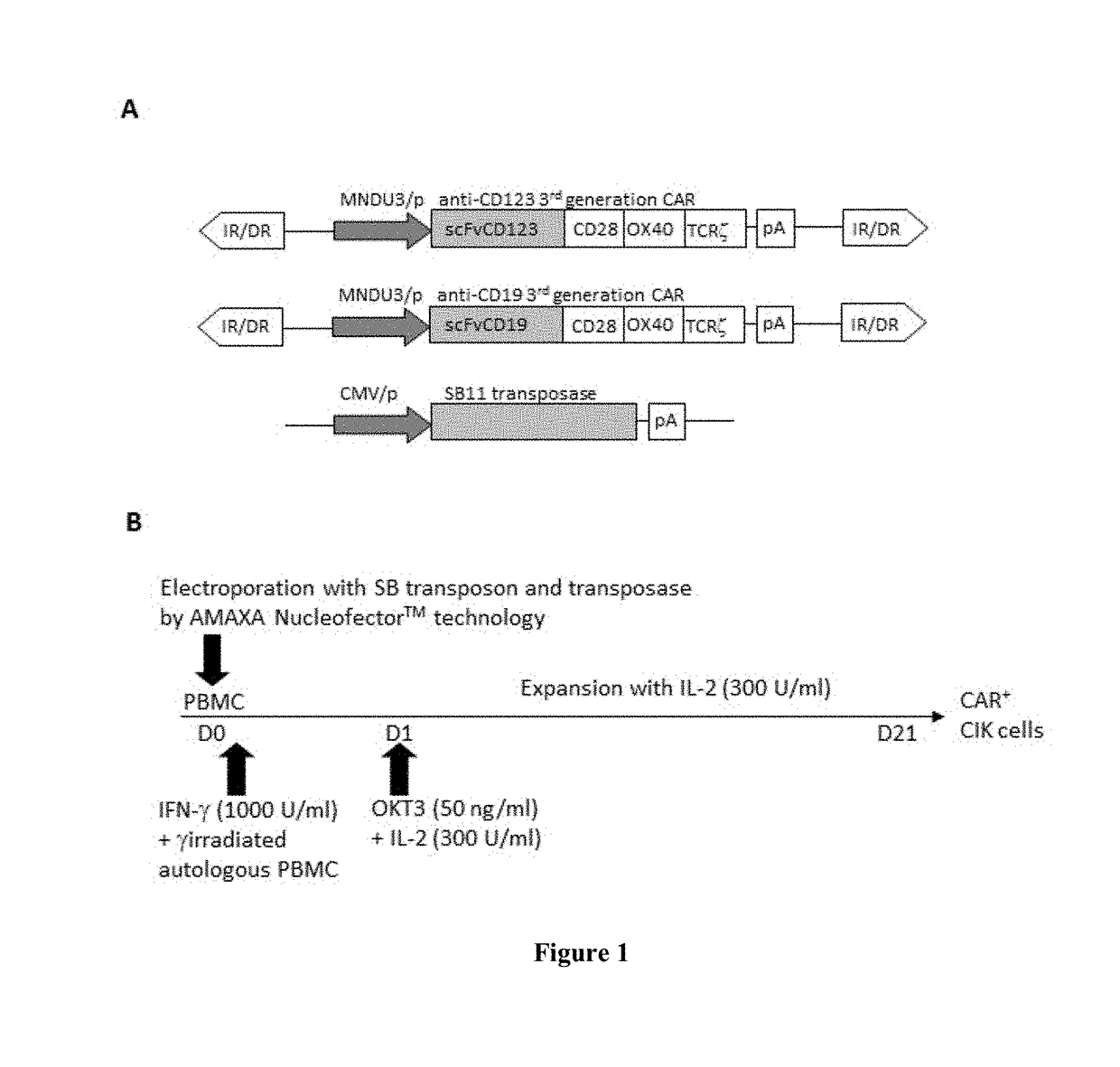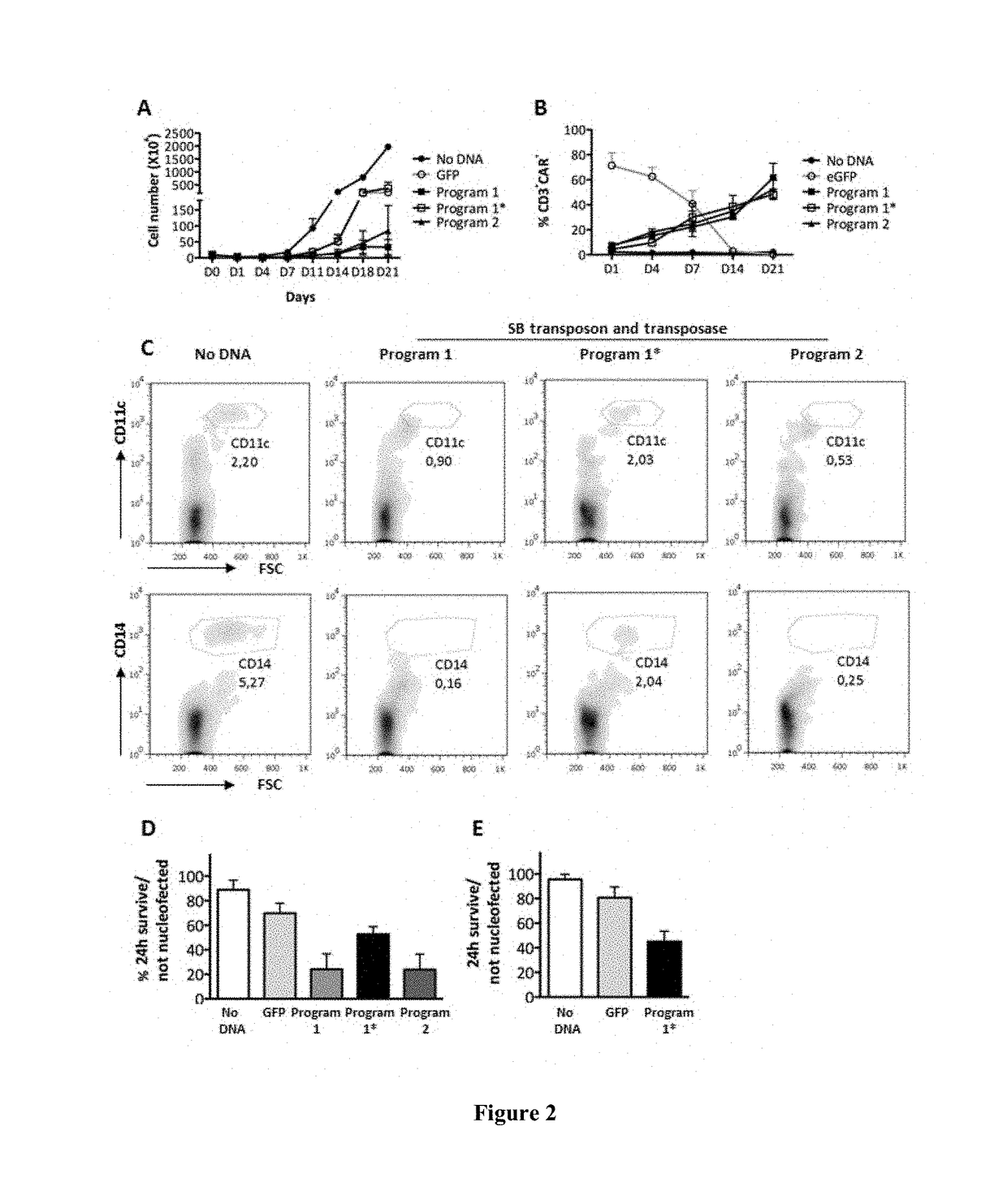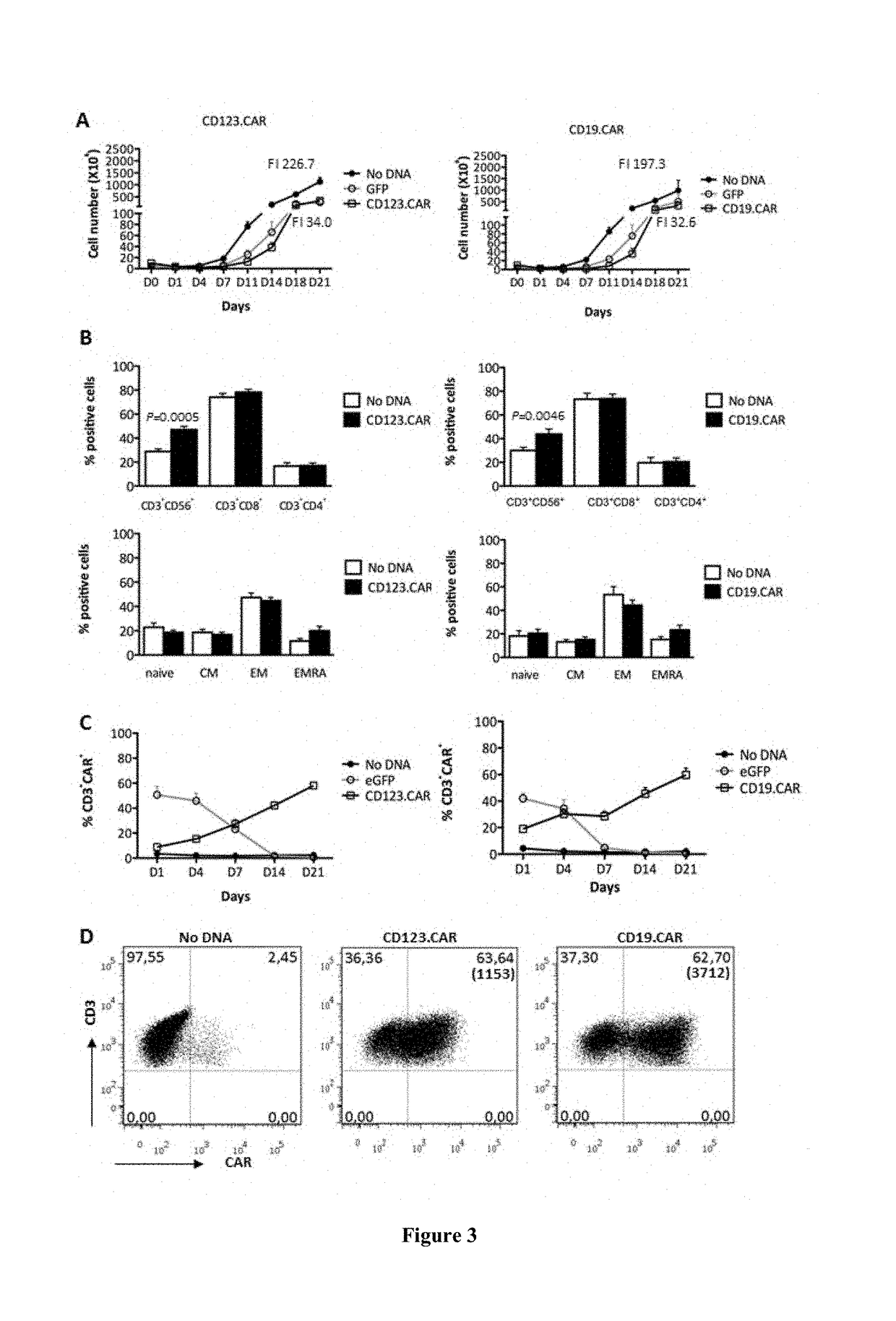Improved method for the generation of genetically modified cells
- Summary
- Abstract
- Description
- Claims
- Application Information
AI Technical Summary
Benefits of technology
Problems solved by technology
Method used
Image
Examples
experimental examples
[0128]The present invention is described in detail using the following experimental Examples of preferred embodiments and related drawings and Figures. These Examples are included with the purpose of illustrating the present invention without limiting the present invention in any way.
example 1
ed Genetic Manipulation of Primary T Cell Precursors with CD19.CAR and CD123.CAR to Induce CIK Cell Population Differentiation
[0129]Following freshly isolated PBMC nucleofection in the presence of SB plasmids, according to the protocol reported on FIG. 1B, the inventors observed that DNA nucleofection causes significant loss of the CD11c+, myeloid dendritic cell (DC) and CD14+ monocytic cell populations and general cell mortality (FIG. 2A-C). The inventors also observed that the addition, 2 hours after nucleofection, of γ-irradiated autologous PBMC as accessory stimulating cells, restores the above mentioned loss of DC and monocytes. This action, with the concomitant stimulation by OKT3, rescued the impaired T cell expansion observed using nucleofector programs in association with plasmids SB (FIG. 2C-E). The 24 hour cell survival was (FIG. 2D-E) 52.6% (+ / −6.3 n=13) for CD123.CAR (CIK-CAR123) and 45.0% (+ / −8.4 n=7) for CD19.CAR (CIK-CAR19). Despite an initial cell modified growth de...
example 2
ed Engineering to Redirect the Effector Cell Activity of CD123 and CD19 CAR-Positive CIK Cell Populations Towards AML and ALL Cell Lines and Primary Blasts
[0132]An efficient lysis of THP-1 AML cell line (85%+ / −4.9) and AML primary blasts (60%+ / −3.6) by CD123.CAR+ cells modified with SB and propagated as CIK cell populations according to the optimal stimulation protocol described in Example 1 has been shown. Similar results have been observed with CD19.CAR+ CIK cell populations (CIK-CAR19) towards REH ALL cell line (80.0%±6.0) and ALL primary blasts (56.8%+ / −7.7) (FIG. 5A-B). CD123 and CD19 antigen expression on target cells has been confirmed via flow cytometry (Table).
[0133]When CD123.CAR+ CIK cell populations (CIK-CAR123) and CD19.CAR+ CIK cell populations (CIK-CAR123) were co-cultured with leukemic cell line and primary blasts, they showed specific cytotoxic degranulation tested by CD107a expression, in line with the lytic activity assessed by cytotoxic assays. In particular, cyt...
PUM
| Property | Measurement | Unit |
|---|---|---|
| Fraction | aaaaa | aaaaa |
| Fraction | aaaaa | aaaaa |
| Fraction | aaaaa | aaaaa |
Abstract
Description
Claims
Application Information
 Login to View More
Login to View More - R&D
- Intellectual Property
- Life Sciences
- Materials
- Tech Scout
- Unparalleled Data Quality
- Higher Quality Content
- 60% Fewer Hallucinations
Browse by: Latest US Patents, China's latest patents, Technical Efficacy Thesaurus, Application Domain, Technology Topic, Popular Technical Reports.
© 2025 PatSnap. All rights reserved.Legal|Privacy policy|Modern Slavery Act Transparency Statement|Sitemap|About US| Contact US: help@patsnap.com



